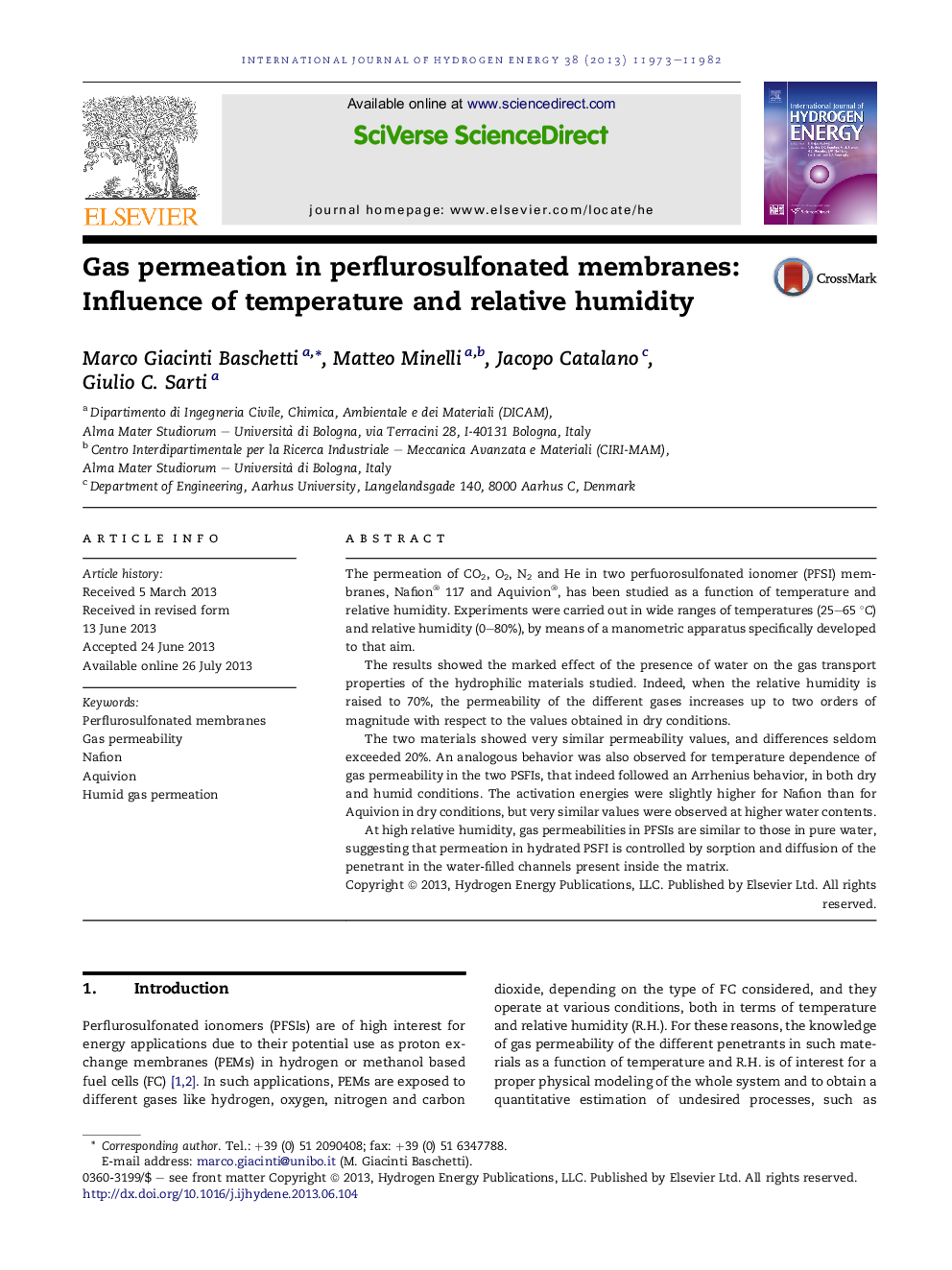| Article ID | Journal | Published Year | Pages | File Type |
|---|---|---|---|---|
| 1274915 | International Journal of Hydrogen Energy | 2013 | 10 Pages |
•Gas permeability in PFSIs has been investigated at different temperatures and R.H.•Gas permeability increases markedly as the water content in the membrane is increased.•Gas transport in humid PFSIs is controlled by diffusion in the water-like domains.•Activation energy of permeation was evaluated both in dry and humid conditions.•CO2/gas selectivity is significantly enhanced as the R.H. increases.
The permeation of CO2, O2, N2 and He in two perfuorosulfonated ionomer (PFSI) membranes, Nafion® 117 and Aquivion®, has been studied as a function of temperature and relative humidity. Experiments were carried out in wide ranges of temperatures (25–65 °C) and relative humidity (0–80%), by means of a manometric apparatus specifically developed to that aim.The results showed the marked effect of the presence of water on the gas transport properties of the hydrophilic materials studied. Indeed, when the relative humidity is raised to 70%, the permeability of the different gases increases up to two orders of magnitude with respect to the values obtained in dry conditions.The two materials showed very similar permeability values, and differences seldom exceeded 20%. An analogous behavior was also observed for temperature dependence of gas permeability in the two PSFIs, that indeed followed an Arrhenius behavior, in both dry and humid conditions. The activation energies were slightly higher for Nafion than for Aquivion in dry conditions, but very similar values were observed at higher water contents.At high relative humidity, gas permeabilities in PFSIs are similar to those in pure water, suggesting that permeation in hydrated PSFI is controlled by sorption and diffusion of the penetrant in the water-filled channels present inside the matrix.
